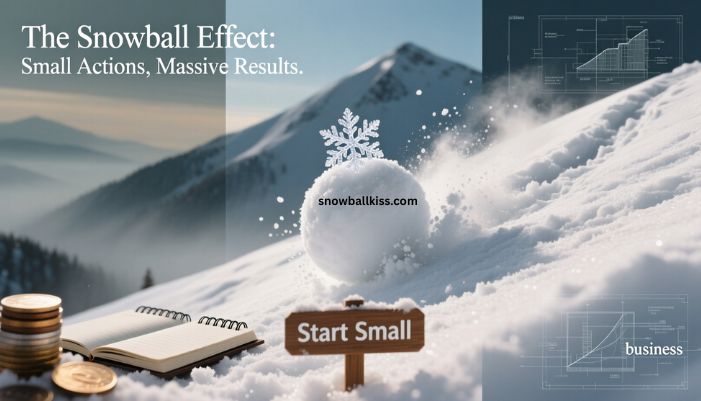Sometimes, it’s hard to find the people you want to study. You may be doing a survey or interview. But if your group is private, hidden, or small, you can’t use a list or call random people. This is where snowball sampling helps.
This method works by using one person to find another. Then that person helps you find someone else. Over time, the group grows, like a snowball rolling downhill.
Let’s break this down.
What Is Snowball Sampling?
Snowball sampling is a way to find people for your study when you don’t know where to start. You begin with a small number of people who meet your criteria. These people then help you find more. Those new people help you find even more.
It’s like making a chain. One person connects you to the next.
This is not random. But it works well when you need to reach people who are not easy to find.
When to Use Snowball Sampling

Use snowball sampling when:
- You can’t find a list of your target group
- People don’t want to be found easily
- The topic is private or sensitive
- Trust is very important
Here are some examples:
- People with rare diseases
- Survivors of abuse
- People with drug problems
- Undocumented workers
- Members of secret or small communities
These people may not join a survey on their own. But if someone they trust tells them about you, they may say yes.
How Snowball Sampling Works: Step-by-Step

1. Know Who You Want to Study
Start by deciding who you need. Write down what makes someone part of your study. Think about their age, background, or experience.
2. Find One or Two People
These are your “starting points” or “seeds.” They should meet your criteria. You can find them through groups, friends, or online forums.
3. Ask Them for Referrals
Once you talk to them, ask if they know anyone else like them. Be polite. Respect their privacy. Ask if they would be willing to share a contact or talk to that person first.
4. Repeat the Process
Each new person can help you find more people. Keep doing this until you have enough participants.
5. Know When to Stop
You stop when:
- People stop giving new names
- You keep hearing the same stories
- You have enough data
- You run out of time or money
This is called data saturation. It means more interviews won’t give you new results.
Types of Snowball Sampling

There are a few ways to use this method. Here are the main ones:
Linear Snowball Sampling
Each person gives you just one new name. It moves in a straight line.
Exponential Snowball Sampling
Each person gives you several names. The group grows quickly.
Non-Selective (Open) Snowball
You take everyone who fits your study. No extra checks.
Selective (Filtered) Snowball
You check each new person. You only include people who meet strict rules.
Benefits of Snowball Sampling
1. Good for Hidden Groups
It’s often the only way to reach people who don’t want to be found or talked about.
2. Builds Trust
People are more open if a friend tells them about you.
3. Saves Time and Money
You don’t need to build a list or hire a big team.
4. Helps Studies Grow Quickly
One person can lead you to five. Then those five can lead to twenty-five.
Problems with Snowball Sampling

1. Bias in the Sample
People often know others who are like them. This means your group may not show all sides of the story.
2. Not Random
Because of this, you can’t use the results to say what most people think or do. It’s good for deep insight, not general facts.
3. Privacy Risks
People might not want their names shared. You need to be very careful with this.
4. No Referrals, No Growth
If your first few people don’t give names, your study stops.
Read: Snowball Effect: How Tiny Actions Lead to Massive Results
How to Make Snowball Sampling Work Well
- Choose your first people wisely
Pick people who are helpful, honest, and trusted in their group. - Be clear and kind
Explain what your study is about. Be honest. Keep things simple. - Protect names and data
Don’t share names without permission. Use fake names or codes when writing results. - Track who referred whom
This helps you understand your sample better. - Know your limits
Watch for the point where new people stop adding new stories.
Other Sampling Methods to Know
If snowball sampling doesn’t work, try:
- Purposive Sampling
You pick people based on your judgment and needs. - Convenience Sampling
You talk to whoever is easy to reach. - Quota Sampling
You decide how many people you want from each group and fill those spots.
Each method has its use. Pick what fits your goal.
Is Snowball Sampling Ethical?
It can be. But you must follow some basic rules:
- Get consent from every person
- Tell them how their data will be used
- Keep names private
- Don’t pressure anyone to give referrals
If you follow these steps, people will trust you more. That trust helps your study grow.
Conclusion
Snowball sampling helps you find people who are hard to reach. It starts small and grows through trust. You ask one person. They help you find the next. You keep going until you have enough.
This method works well for sensitive topics or private groups. It’s not perfect. It has limits. But when used right, it gives strong, rich stories and insights.
FAQs About Snowball Sampling
What is snowball sampling?
It’s a way to find people for research by asking current participants to refer others.
Who should use snowball sampling?
Use it when your target group is small, hidden, or hard to reach.
Is snowball sampling random?
No. It grows through referrals, not chance.
Is it good for surveys?
It can help, especially for interviews or case studies. But it’s not great for large surveys that need to reflect the whole population.


